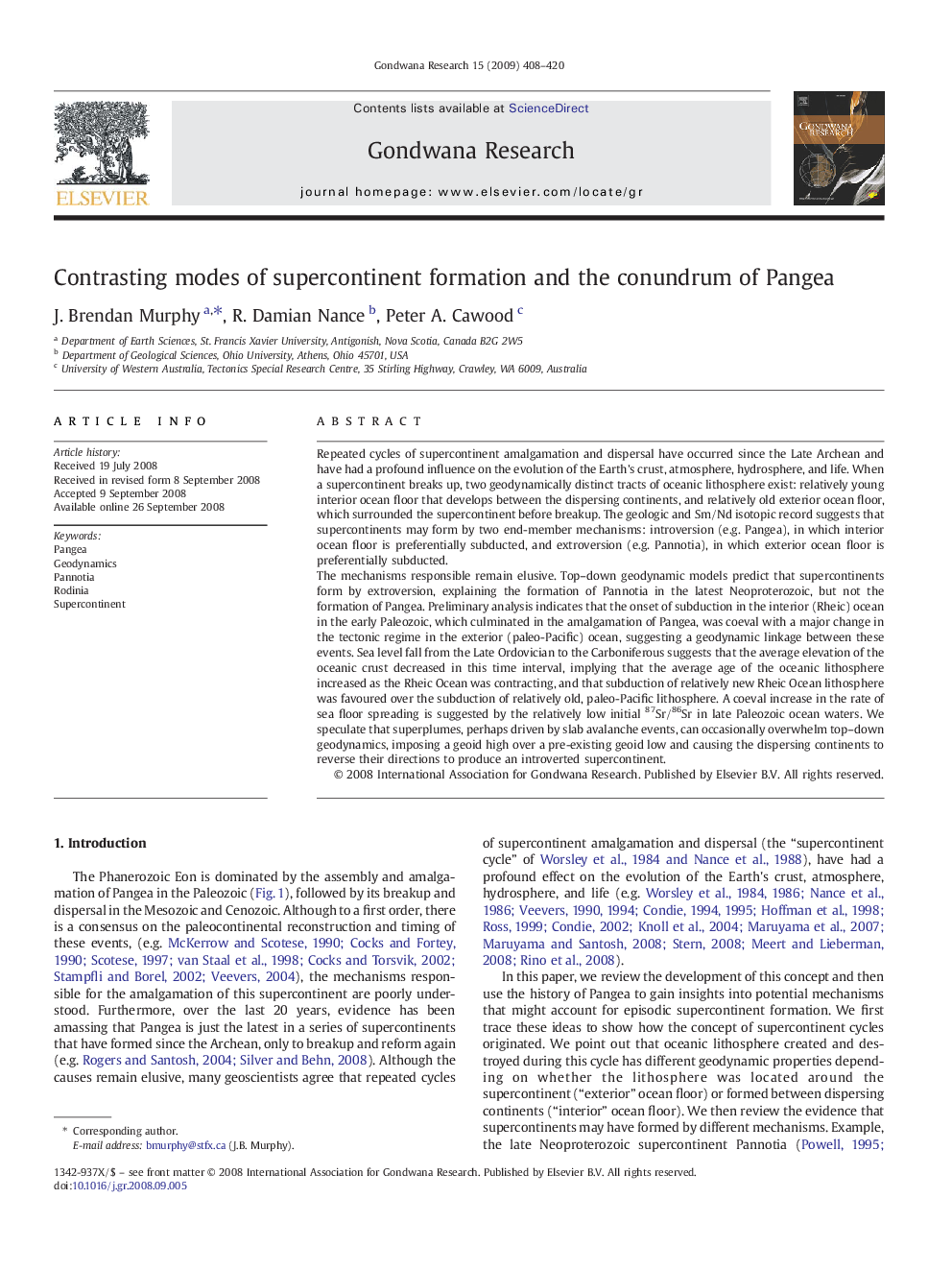| Article ID | Journal | Published Year | Pages | File Type |
|---|---|---|---|---|
| 4727369 | Gondwana Research | 2009 | 13 Pages |
Repeated cycles of supercontinent amalgamation and dispersal have occurred since the Late Archean and have had a profound influence on the evolution of the Earth's crust, atmosphere, hydrosphere, and life. When a supercontinent breaks up, two geodynamically distinct tracts of oceanic lithosphere exist: relatively young interior ocean floor that develops between the dispersing continents, and relatively old exterior ocean floor, which surrounded the supercontinent before breakup. The geologic and Sm/Nd isotopic record suggests that supercontinents may form by two end-member mechanisms: introversion (e.g. Pangea), in which interior ocean floor is preferentially subducted, and extroversion (e.g. Pannotia), in which exterior ocean floor is preferentially subducted.The mechanisms responsible remain elusive. Top–down geodynamic models predict that supercontinents form by extroversion, explaining the formation of Pannotia in the latest Neoproterozoic, but not the formation of Pangea. Preliminary analysis indicates that the onset of subduction in the interior (Rheic) ocean in the early Paleozoic, which culminated in the amalgamation of Pangea, was coeval with a major change in the tectonic regime in the exterior (paleo-Pacific) ocean, suggesting a geodynamic linkage between these events. Sea level fall from the Late Ordovician to the Carboniferous suggests that the average elevation of the oceanic crust decreased in this time interval, implying that the average age of the oceanic lithosphere increased as the Rheic Ocean was contracting, and that subduction of relatively new Rheic Ocean lithosphere was favoured over the subduction of relatively old, paleo-Pacific lithosphere. A coeval increase in the rate of sea floor spreading is suggested by the relatively low initial 87Sr/86Sr in late Paleozoic ocean waters. We speculate that superplumes, perhaps driven by slab avalanche events, can occasionally overwhelm top–down geodynamics, imposing a geoid high over a pre-existing geoid low and causing the dispersing continents to reverse their directions to produce an introverted supercontinent.
